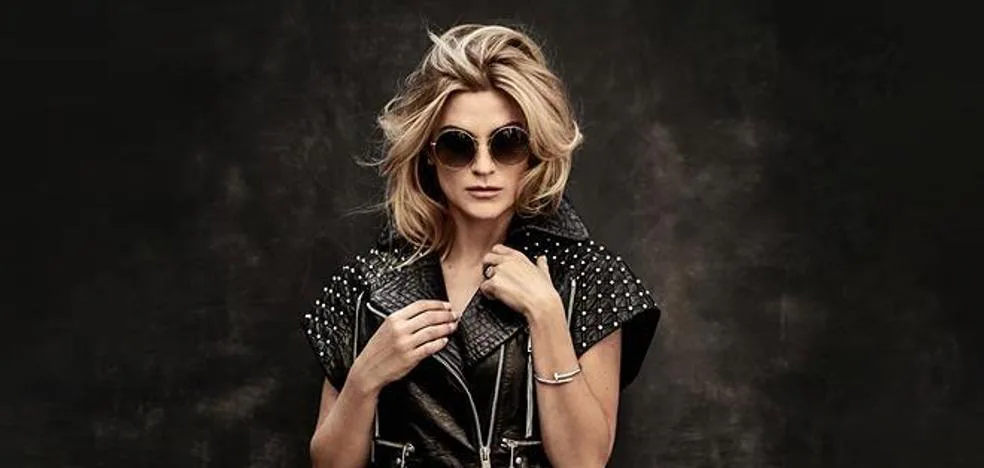The unexpected is already a hallmark of the Rendibú, which in this edition has let go of its competitive character to explore new forms of production with María Jerez and Playmodes
The ‘claim’ of this edition leaves no doubt: Rendibú -as the name suggests- only pays tribute to those who are part of the club. The creative agency Fellas, responsible for the communication campaign, seems to have borrowed the Spanish translation of its film relationship ‘Goodfellas’ (Scorserse, 1990) to make a hyperbole of the sense of belonging and secrecy: “One of ours” . Only those found to be in possession of the bear’s bandana were allowed to enter the event. Don’t think wrong, it’s not a question of elitism or exclusion, but rather specificity and camaraderie. But in every band there is a hierarchy and the leadership has kept the biggest secret to keep the surprise factor.
After proving our membership status, we were given access to the installation ‘Blob’, by María Jerez, who had come to settle an outstanding Rendibú account after successive cancellations. Far from losing its validity, in recent years the piece has become a classic that has even become part of the CA2M collection. ‘Blob’, a perfect balance between visual and performing arts, forms a sea of accumulations of dust that appeals to the sensuality of the organic and the strangeness of science fiction. The composition of moving fabrics is a neat choreography that is activated by different elements, people and air. The horizontality of the proposal and the narrativity of the sound invite different journeys in which the viewer takes on the disturbing while waiting for a solution, a revelation that will never come. The ‘entity’ – as it is called by the author – is meant to frustrate the understanding, not to get stuck. Desire lives; it offers us only sensuality and disgust. And again. “The moment something new appears, it kills the previous one,” says María Jerez.
Already located -greetings of rigor and third Estrella de Levante-, we could enjoy some virtual reality experiences, as well as the capsule concerts in which the new folklore of Maestro Espada was the main attraction. The themed dinner, dedicated to Ukraine, gave way to the real sensation of the evening: ‘FORMS’ by the Catalan Playmodes in collaboration with the Salzillo Quartet. The piece is an overwhelming multimedia show for string quartet, electronic music and panoramic visuals based on the concept of live ‘graphic sonification’. When they saw the musicians come on stage with their stringed instruments, all kinds of prejudices arose in the audience, which were abruptly dispelled when a series of graphic elements began to unfold on the nine-meter screen, which at that moment were translated by the virtuoso interpreters of the Murcia Region Symphony Orchestra. The size, location, clarity and shape of each of these symbols were transformed into sounds as they crossed the reading line of this peculiar score, allowing viewers to perfectly follow and even anticipate the electronic track, which ran at different speeds on the same timeline. And we are used to the visual being more and more present in the reproduced and live music -what would Eurovision be without the effects or the choreography-. Even Spotify has given up and is no longer limited to sound.
However, we are not talking about a huge Windows Media Player that creates visual effects according to the frequencies, but rather the reverse process. Based on some previous rules, an algorithm creates a series of random images that are automatically converted into music. It is the perfect integration between visual arts and music, Kandinsky’s dream and mine, that I ‘read’ the staff but not ‘write’. The interpretation caused several applause during the performance and a “how loud!” shouted out loud what we were all thinking.
Laura Sam and Juan Escribano then presented another form of musical hybridization, in this case close to the ‘spoken word’, on the same circular stage designed for Playmodes’ second proposal, ‘Espills’. Another central piece of the evening was undoubtedly this hypnotic dynamic light sculpture, created on the basis of a powerful generative laser that retranslated the lighting designs into sound compositions, always in real time. The creators say the work originally had a narrative meaning that has been lost in favor of abstraction, of formal exploration; of aesthetic potential.
If this were an Umbral column, this last paragraph would be bold to name all the artists, writers, musicians, managers and designers who ended up doing the conga to the beat of the DJ or debating the most banal issues in the universe, but since I must maintain the discretion required of me so that they continue to sing the “gooble gobble, one of us” from “Freaks” (Browning, 1932), I will close with a little reflection that sticks to the orb of the strictly artistic. As in the atonal music to which ‘FORMS’ refers, the unexpected is already a hallmark of Rendibú, stripping off its competitive nature to explore new forms of production. In this edition, he confronted us with an idea of art moving closer and closer to music and technology, suggesting new ways to be an artist heralded by Deresiewicz’s death, yet still seems attractive enough as if to avoid the telltale misstep. from a friend, who confessed to me that he wanted to be “one of you.”
Source: La Verdad
I’m Wayne Wickman, a professional journalist and author for Today Times Live. My specialty is covering global news and current events, offering readers a unique perspective on the world’s most pressing issues. I’m passionate about storytelling and helping people stay informed on the goings-on of our planet.



